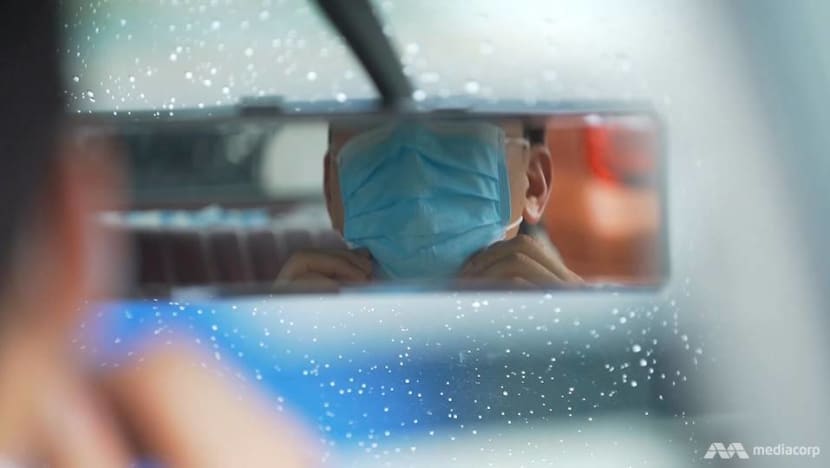As Singapore reopens, public transport’s cleaning regime takes a safety test
With ridership on trains and buses increasing, what is being done to safeguard commuters from the coronavirus, and are the measures enough? The programme Talking Point investigates.
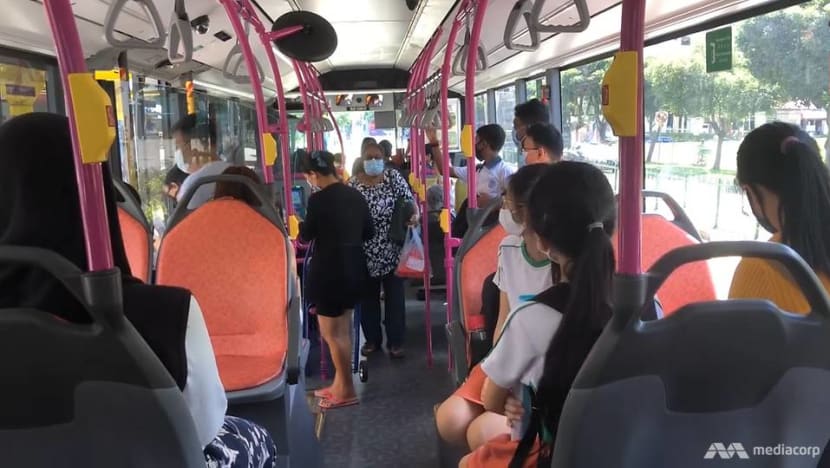
Since the “circuit breaker” ended, the authorities have said safe distancing on public transport is potentially impossible.

This audio is generated by an AI tool.
SINGAPORE: Television host Steven Chia has a confession to make: He has not allowed his children, in Primary Four and Secondary Two, to use public transport since the start of the COVID-19 outbreak.
“I’m just fearful that they might come into contact with someone who is infected, especially during the peak hours,” he said.
He is not alone in feeling that way. A poll he created on Instagram found that 72 per cent of roughly 100 respondents felt that it was a “valid concern”, while 28 per cent thought it was “just paranoia”.
So far, there has been no conclusive evidence of the coronavirus spreading on public transport.
A city like Milan, which is among the hardest hit, has not seen infection clusters emerge from reopening its transit system. Neither has Japan, which has some of the world’s busiest rail networks.
In Singapore, the Health Ministry’s investigations have not established epidemiological links between the 14 public transport staff who caught COVID-19 and the passengers with whom they may have come into transient contact.
WATCH: How COVID-safe is public transport? Buses, trains and the coronavirus (2:59)
But states are taking no chances and have responded with different strategies to manage risks. In New South Wales, Australia, passengers are capped at 12 to 25 per bus and 23 to 36 per train carriage.
South Korea made wearing of masks compulsory on public transport to reduce the risk of a second wave of infection. So too has Singapore, where commuters are also urged to avoid talking.
Since the “circuit breaker” here ended on June 1, morning peak ridership on public transport has doubled and is expected to increase further in the current Phase Two of reopening.
With the authorities saying that safe distancing on public transport is potentially impossible, commuter safety has got to be bolstered by other measures like cleaning.
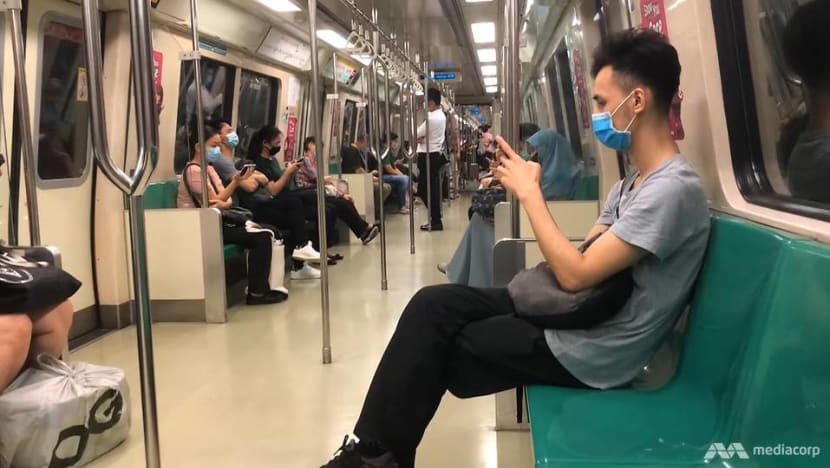
The programme Talking Point gains access to the enhanced cleaning regime on trains and buses to find out if it is good enough to put any worries to rest. (Watch the episode here.)
FAST TURNAROUND ON TRAINS
When it comes to cleaning at stations and interchanges, common touch points like seats, queue rails and escalator handrails are wiped down with disinfectant about once every two hours.
Where the cleaners must be super-fast, however, is on the trains as they swoop in during service loops.
At the Circle Line (CCL) terminal stations, for example, a team of five to six cleaners have as little as five to eight minutes to wipe down the train interior before passengers are loaded up for the next ride.
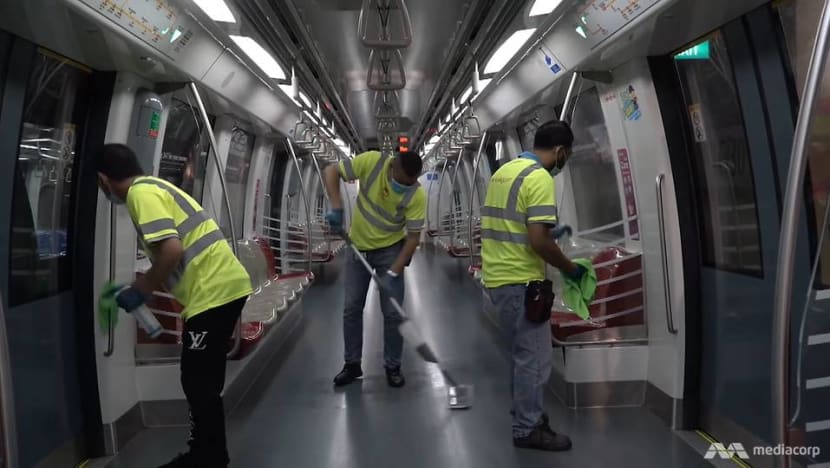
And they do it while the train is moving. At HarbourFront station, where the track makes a loop, the CCL trains terminate at one platform before crossing over to the other platform.
This gives SMRT the window of opportunity to give some trains an extra clean during off-peak hours, without affecting the service frequency. The operator implemented this after Singapore’s Disease Outbreak Response System Condition was raised to orange level.
“To do that, we’ve had to increase our cleaning manpower, probably by about five to eight per cent,” said SMRT vice-president (building and facilities) Siu Yow Wee.
“But the main cleaning ... is (conducted) before we launch the train from the depot.”
This daily overnight cleaning is when his cleaners “thoroughly clean the entire train’s internal touch points”. Trains disinfected in the depot are also treated with antimicrobial solution, which is the rage now.
Antimicrobial coatings have been applied to Housing and Development Board lift buttons and automated teller machines. And they have been progressively applied to the interior of trains and buses in a ramp-up of cleaning efforts in public transport since the circuit breaker.
The coating works like a shield. When in contact with bacteria and viruses, its compounds puncture the membranes, killing them.
Without this protection, the coronavirus can last on different types of surfaces for a long time as studies have suggested: Up to three days on plastic and stainless steel; and up to four days on glass.
Over at SBS Transit, its bus support division head, Yeo See Peng, has overseen the application of antimicrobial coating since the end of last month, with nearly all its 3,500 buses coated in time for Phase Two of reopening.
This is done using a spray gun, instead of wiping down surfaces, for a more thorough application of the antimicrobial solution, he explained. And the “special disinfectant” used, called sdpro, “can last about 180 days”, or about six months.
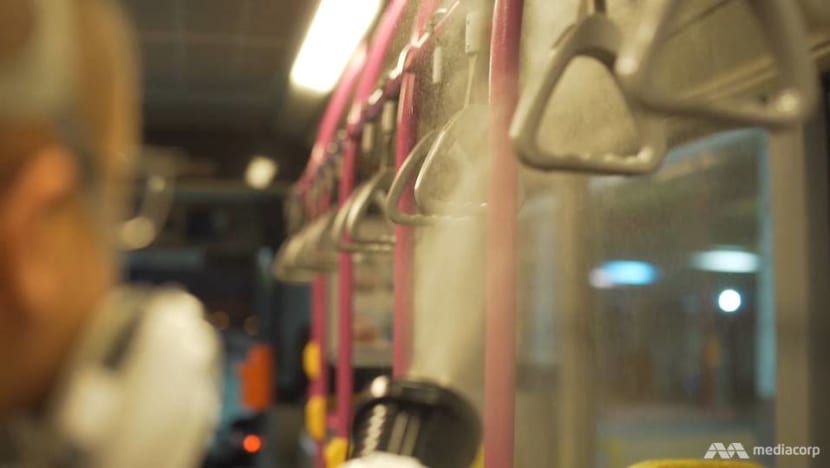
“Obviously, because we’re now still doing testing and measurement every month, if we feel that its effect has gone down, we can always (recoat) faster than six months,” said Yeo.
BUS POLES NOT SO CLEAN
One of the companies producing antimicrobial coating is jMedGuard, and co-founder Thomas Teh, who is in charge of product development, cautions that it is not foolproof — there are “limitations”.
Citing an example of somebody whose hands are covered with chocolate and who happens to “soil the surface” of a grab pole, he says: “You’re blocking the surface coating from acting against these viruses or bacteria.
“Or imagine ... some (people) wearing rings or holding something — a hard object. They’d definitely scratch off the coating, and the coating wouldn’t last on these surfaces for (the usual) period of time.”
To put the coating to the test, Talking Point collected 36 swab samples from the poles, hanging handles, buttons and windows in nine buses where it had been applied.
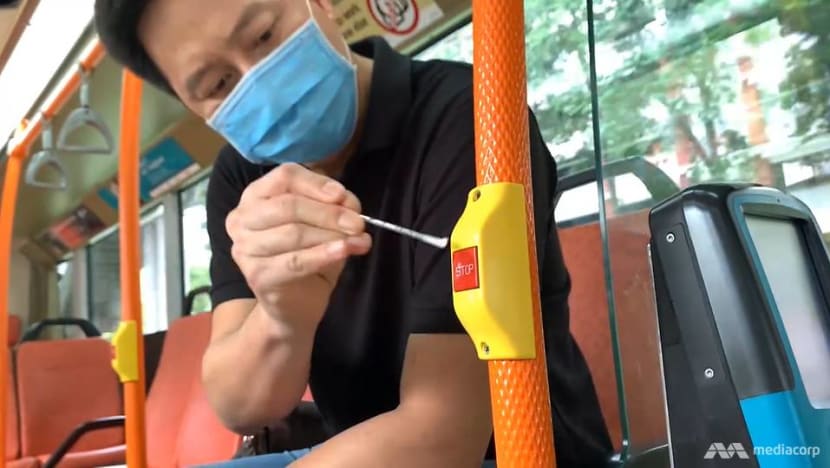
The samples were put through an Adenosine Triphosphate test, which measures the volume of micro-organisms found. While it cannot directly identify traces of coronavirus, the lower the micro-organism count, the less likelihood of the coronavirus being on the surface.
The results showed that the average readings for buttons, windows and handles were below 30, which is the cleanliness benchmark for critical touch points in hospitals.
But the grab poles had an average reading of 101, in the cautionary range. “We should probably do something about that surface,” said Teh.
“The frequency of touch there would be higher, and the chances of wearing (away) this coating on these surfaces are also higher. So any microbial coating that may be there may lose its effectiveness over time.
“This is something we should continuously monitor. ... To say that this coating can last 180 days for all surfaces would be incorrect.”
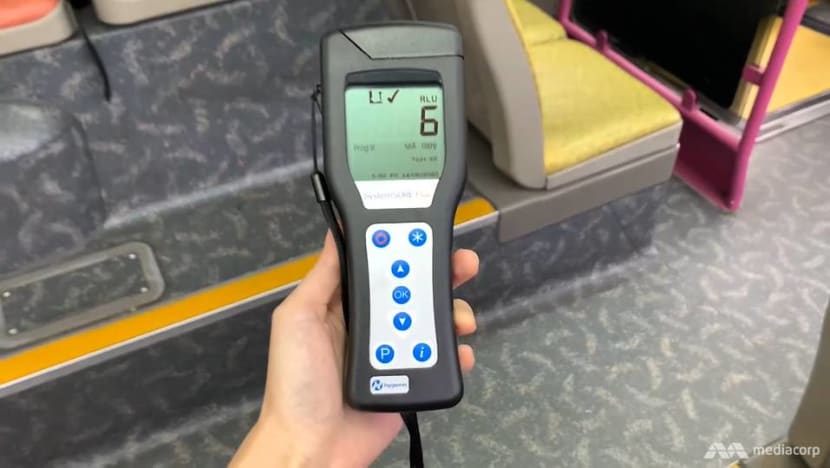
This is why the coating and current cleaning regime must go hand in hand.
Still, the pole readings are “well below” the 200 mark — anything above this is considered dirty, while one’s smartphone touch-screen is typically in the “very dirty” range of 501 to 1,000.
“So we probably shouldn't be that fearful of a grab pole,” Teh added. While acknowledging that the readings would be higher if tests were done in Phase Two, he pointed out that commuters “have to use the grab pole”.
“The operators are doing their best to do the coating (and) daily disinfection, but we as individuals should ... keep up our personal hygiene. I think that’s the best way we should be (moving) forwards.”
That includes wearing one’s mask properly — covering the nose and mouth — as “the poorer the compliance, the greater the virus would spread”, stressed infectious diseases specialist Leong Hoe Nam.
“If everyone sticks to this rule, we don't need the safe distancing,” he said. “We’d be as good as 99.7 per cent effective in preventing COVID spread.”
Watch this episode of Talking Point here. New episodes on Channel 5 every Thursday at 9:30 p.m.
